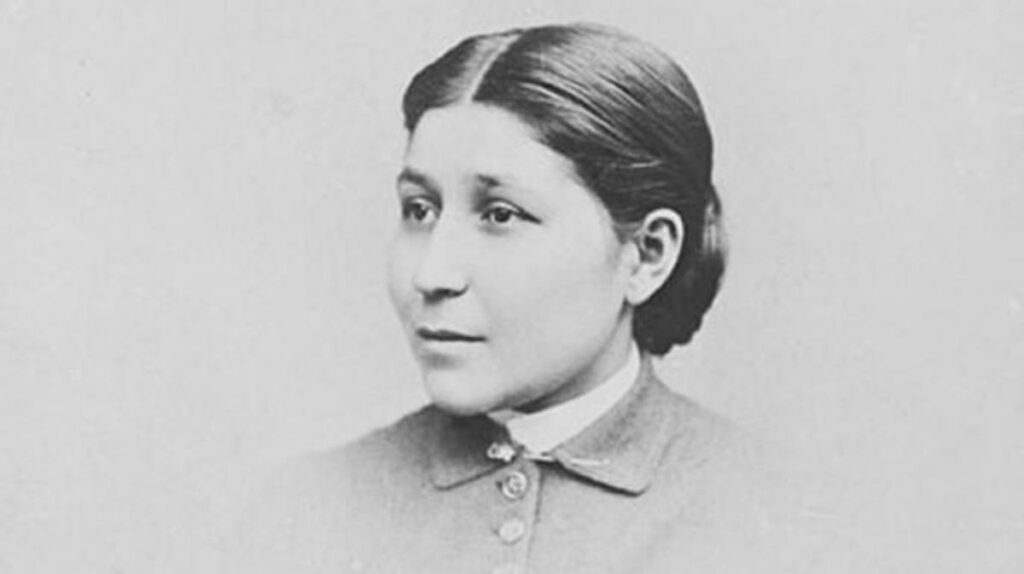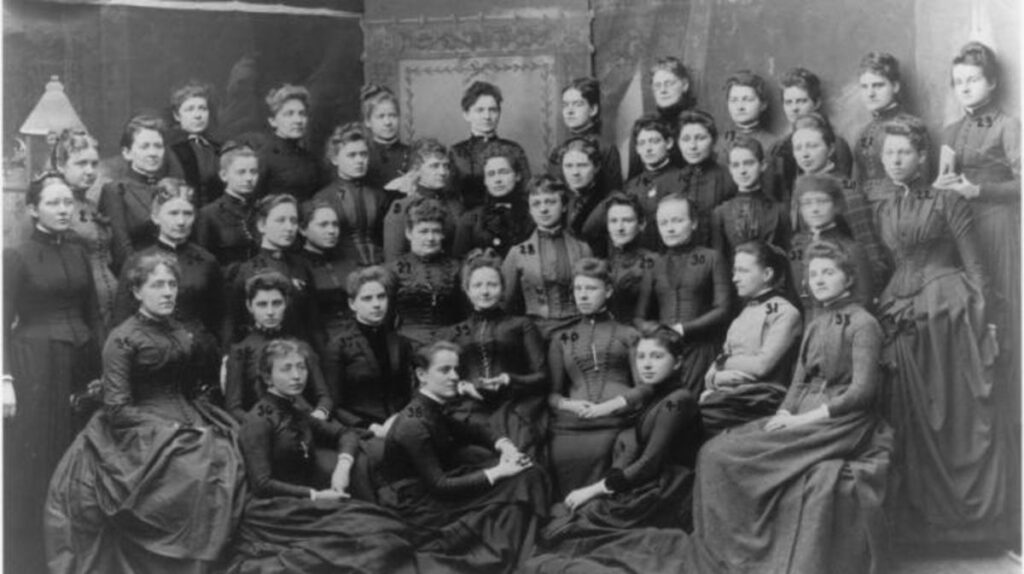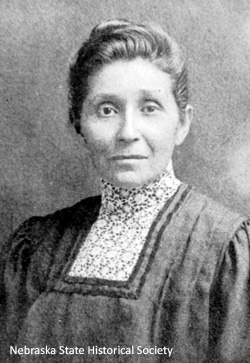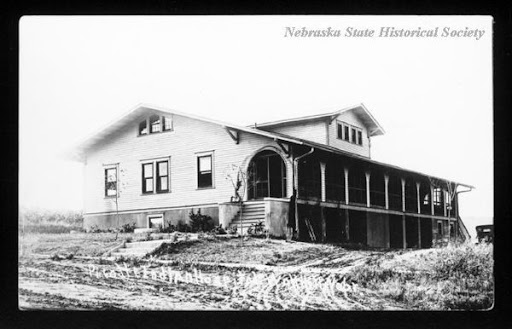Dr. Susan La Flesche Picotte: The First Indian Doctor
Museum members support scholarship like this.
It’s difficult to do justice to the impact Susan La Flesche Picotte had during her lifetime, and beyond. In a time when even the most privileged white women were barred from medicine, and as an American Indian, when opportunities were scarce and laws became ever more restrictive for them, she became a doctor. Decades before Indian Health was a blip on the government’s radar, she opened the first hospital on a reservation. Her services were available for anyone, whether they were a white farmer or an Indian mother. Anyone who was sick was welcome and treated. She broke intersectional barriers as a woman and an American Indian, and flourished in American medical schools, cities, and later back home on her reservation.
When she was a young girl, La Flesche witnessed the death of an older Native American woman. The doctor had been called four times, and each time, he had promised to hurry and attend to her, but he never came. Susan was there the whole night, and it had a profound effect on her. She recalled feeling that the doctor viewed the patient as “just another Indian,” and she wanted to do something about it.

Born on June 17, 1865 to one of the last great Chiefs of the Omaha reservation, Joseph La Flesche, Susan La Flesche and her siblings were urged by their father to gain as much Euro-centric education as possible. After he had visited Washington D.C. years earlier in the 1830s, he saw the world changing. He was quoted as telling his people, “There is a coming flood which will soon reach us, and I advise you to prepare for it.” All of his children were sent to a Presbyterian Mission School so they could learn English and American ways. Susan went to the Presbyterian school on their reservation and learned English and French in addition to retaining her own language and Omaha customs. This blending of two cultures was something that she would retain for the rest of her life.
She was not the only La Flesche sibling to make a name for herself. Her brother, Francis La Flesche, would go on to become a famous ethnologist, and her sister, Bright Eyes, would become an activist for Indian Rights. Because Susan was the youngest daughter, and Joseph La Flesche, or Iron Eyes, had seen the need for adaptation, she was never given an Indian name. He wanted her to “go forth in the white man’s world.” Chief Iron Eyes would sadly not see her become a doctor. He died a year or so before she graduated from medical school.
At age 14, La Flesche boarded a train with her sister headed for New Jersey to attend the Elizabeth School for Young Ladies. After two years, she left for Virginia to attend the Hampton School, where the sons and daughters of former slaves and Native people learned together and were given support. Here, she met T.I., who she wrote was “the handsomest Indian I ever saw.” Unfortunately for them both, she knew she needed to continue with her studies, leaving soon after to go to medical school.

La Flesche then went on to Philadelphia, where she graduated in 1889 as the Valedictorian of her class from the Women’s Medical College of Pennsylvania. Rather than staying on the East Coast and living a fairly comfortable life, she returned home to the Omaha reservation, at 24 years old, to be the only doctor to over 1,200 people on 400 square miles of land.
The methods of medicine that La Flesche was taught in medical school were not greeted with enthusiasm in her American Indian community. Her very first case was a sick young boy. She prescribed medicine to be given to him, but she was so anxious that she might have diagnosed him incorrectly that the next day she rode out to where his family lived to check on him. When she got there, she was relieved to find him playing in a stream with his playmates.

La Flesche married Henry Picotte in 1894 and would go on to have two boys: Caryl and Pierre. She once again defied cultural norms and continued to work as a doctor while caring for two small children. Caryl later said that he and his brother were raised in the back of a buggy as she took them with her to treat patients.
When Chief Iron Eyes died, he had, according to La Flesche, held at bay “the bane of civilized and uncivilized people,” which was alcohol. She would later take up his cause and become a passionate prohibitionist. Iron Eyes had started the very first Indian Police Force in the country, with the purpose of keeping white alcohol sellers out of the reservation. With his death, the sellers came back, and alcohol became a widespread problem. For La Flesche, it would also become personal. Her husband, Henry Picotte, died in 1905 of tuberculosis, made worse by his heavy drinking. She became a widow with two young sons.
La Flesche kept on treating people, riding miles on her horse and buggy, often at the risk of her own health. In 1913, she opened the first hospital on a reservation, which she paid for with funds she raised herself. La Flesche died two years later in 1915, at the age of 50. The years of nonstop work and traveling through snow and extremely cold temperatures had caught up to her.

Dr. Susan La Flesche Picotte had far surpassed her father’s dreams and her own. Her legacy is still strongly felt today, especially by the Omaha people. She paved the way for Native doctors, and what she called Indian Health. Her life, her trials, her great empathy, her sense of justice, and her accomplishments are a truly incredible testament to her character and the human spirit.
Want to learn more? Follow us on Facebook and Twitter to discover more stories from Civil War medicine!
Become a museum member and support our educational programs and research like this.
About the Author
Amanda Isabelle Amezcua is an award-winning graduate from the University of Oregon. She received her B.A. in Philosophy and History at the University of Oregon, and has a keen interest in American Medical History. Born in Washington D.C., raised in California, and educated in Oregon, she is now back on the East Coast. She is currently employed as a Content Researcher and Illustrator for Portland Early Learning Project. She’s an aspiring academic librarian, and has plans to forward her education toward that end.
Sources
- “Susan La Flesche Picotte (U.S. National Park Service).” National Parks Service. U.S. Department of the Interior. Accessed April 12, 2021. https://www.nps.gov/people/susan-la-flesche-picotte.htm.
- Klein, Christopher. “Remembering the First Native American Woman Doctor.” History.com. A&E Television Networks, November 17, 2016. https://www.history.com/news/remembering-the-first-native-american-woman-doctor.
- Vaughan, Carson. “The Incredible Legacy of Susan La Flesche, the First Native American to Earn a Medical Degree.” Smithsonian.com. Smithsonian Institution, March 1, 2017. https://www.smithsonianmag.com/history/incredible-legacy-susan-la-flesche-first-native-american-earn-medical-degree-180962332/.
- “Changing the Face of Medicine | Susan La Flesche Picotte.” U.S. National Library of Medicine. National Institutes of Health, June 3, 2015. https://cfmedicine.nlm.nih.gov/physicians/biography_253.html.
- Medicine Woman, directed by Christine Lesiak and Pricella P. Redcorn. (2016; Vision Maker Media via PBS).

